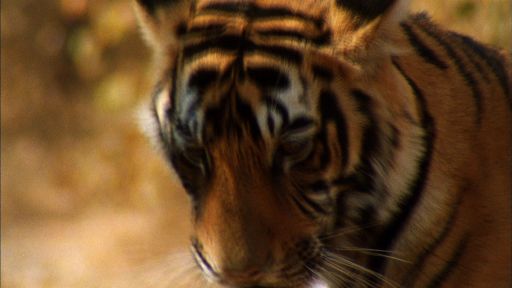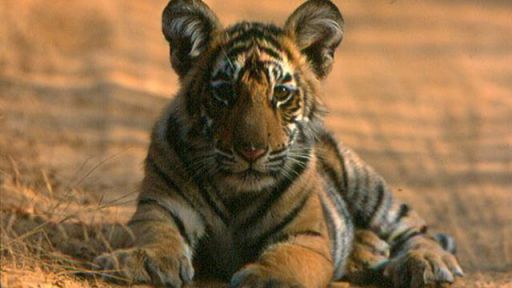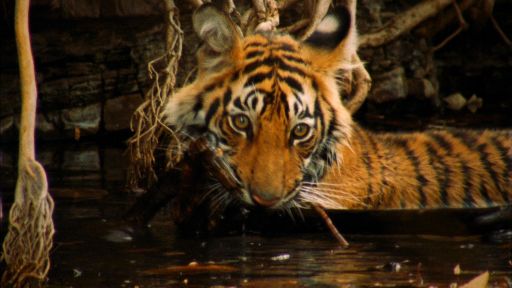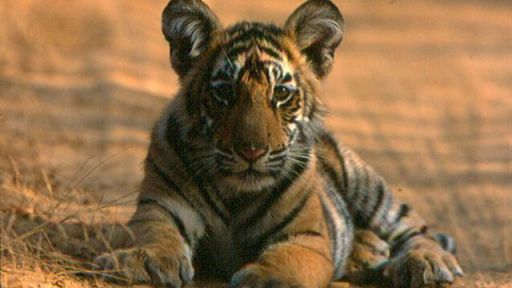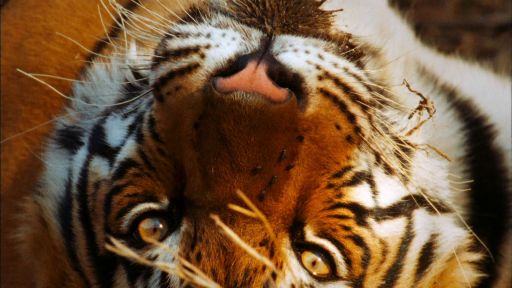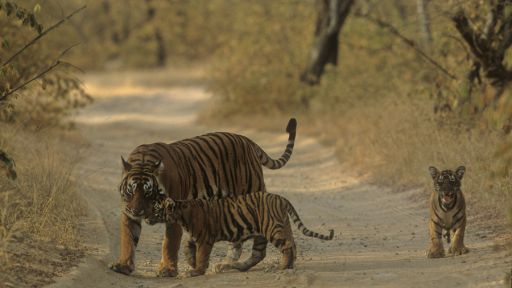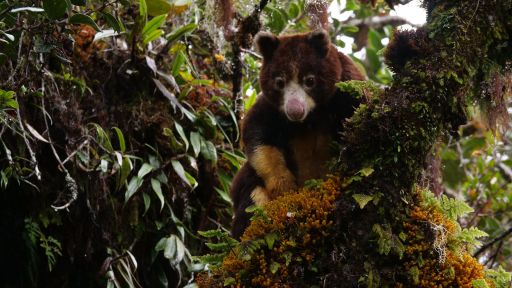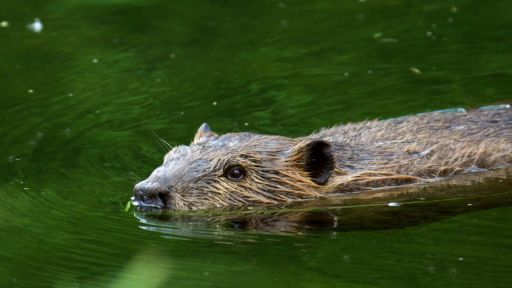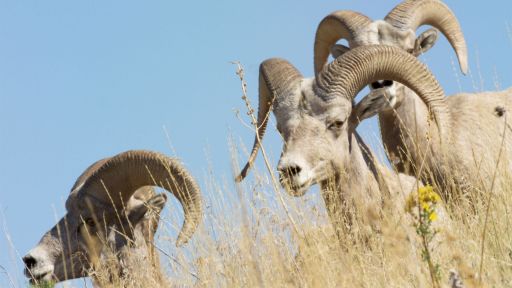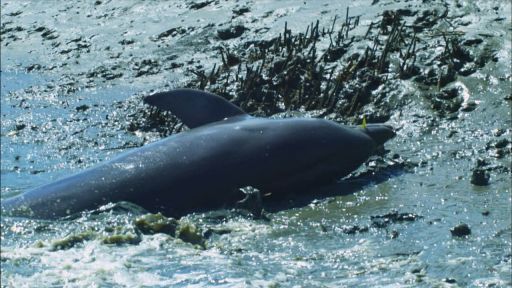Irish flmmakers John Murray and Colin Stafford-Johnson talk about the tiger cub Broken Tail, the making of their film about the tiger’s short life, and the future of tiger conservation in India.
Q: When did you learn about Broken Tail and how did you get involved in the making of this film?
John Murray: Many years ago I had heard of Colin, because I knew of these magnificent tiger films that were made by the BBC years ago made for the Natural World. And I remembered the name of the cameraman Colin Stafford-Johnson but I didn’t know he was Irish. Somehow we both connected. We just got chatting and I was asking him about the films and what he was doing now. And I asked is there one story left that you’d like to tell. And he said there is. And it was the story of this cub called Broken Tail who had particularly transfixed him during his years filming in India. If you’re familiar with animals and work with them over the years, there will always be one animal that stands out and it was really clear to me that Colin was really transfixed or taken with this particular animal. Of course it was this animal’s story that was so compelling. So he just sat me down and told me the story and that he thought it would make a great film, a personal odyssey on the trail of this tiger cub, and that through that journey and story so much could be revealed about what’s going on with tigers in India. I think there’s been many many films about tigers in India and the conservation of them and the danger to them, but it tends—and this is without being critical because it’s great when people highlight the problems that are out there—but it tends to be the same story over and over again which is tigers in trouble, small numbers of them left, and big bad poachers are out there killing them all. And the story is a lot more complex than that. The poachers are poor people living on the fringes of the park. It was soon apparent there was a brilliant story with this tiger. He was very appealing. He had a broken tail. You couldn’t wish for something better because he was so identifiable. And there was this other complex story that we could reveal to the audience through Broken Tail’s story. And after that, it took a number of years to get it off the ground. We worked hard. In Ireland we got great support, initially from the Irish film board and the Irish TV station. And that’s basically how it was born. Eventually we got the money and off we went and did it.
Q: What was the role of Salim Ali in the film?
John Murray: Salim is a great friend of Colin’s and he was his guide and partner really for those early years in Ranthambhore following those tiger families. Salim’s role in terms of the film he was kind of our location man on the ground there setting up permits and visas. A kind of location producer really, which is very complex role, getting all the right paperwork. And then obviously he appeared in the film with Colin, the two of them reliving old days with Broken Tail.
Q: Colin, the film included a lot of your early footage during those 600 days you followed Broken Tail and his family. How was revisiting that footage?
Colin Stafford-Johnson: There were some scenes in particular. There’s one where I temporarily lost Broken Tail for some time. It was at an age where he had a brother, Slant Ear, and they used to go every place together. And then the family seemed to split up a little too suddenly, and we wondered what was going on. Had there been an event with some other tiger? And then, one day we found them some miles away from their territory, and he came walking down this track toward me and I just happened to be the right place. And it’s just a shot of him walking slowly towards the camera. And what was particularly poignant for me about that shot for me is he just walked up towards me, and one of those moments was just the shot I wanted of a three-year-old male tiger. He looked perfect. And I turned around to let Salim know and I said “Salim, we nailed it.” And when I turned back, Broken Tail had just gone behind some trees and I never saw him alive again. So for me, it was the nicest shot I ever got of him and it was the last time I saw him. So that picture, essentially set up the whole film for me. That was the image of him, when I found out what happened to him, that set up so many questions in my mind.
Q: Broken Tail was your first major assignment as a wildlife photographer. What did you learn from your experience filming Broken Tail?
Colin Stafford-Johnson Well, I think when you’re in one place for a long time like I was in India, it just can’t help but grab you. It’s a fascinating place, not just in terms of wildlife but it’s human life too. It’s just a fascinating melting pot of people. I really learned by spending so much time in one place. I felt I really began to understand how this national park worked, how it was run. I could see it from the top end, from the people who ran the park, from the forest guards. I could see the problems they faced. And the villagers. You feel empathy for the people, as well as empathy for the animals. And then you start to get frustrated because you think that many of the things that are good for animals are good for people, too. A sensible long-term ecologic future, like keeping the long chain of mountains covered in trees. Good for tigers, good for people.
I think sometimes the economic benefits of wildlife are not immediate and they are not fast. Most governments act within time frames of just a few years. Sometimes you have to take a longer picture. And if you were to tell all those goat herders, “Ok, take all those goats off the mountains”—these guys don’t think of the long-term. And when it comes to election time, they vote for the guy who allows them to continue grazing their goats. There’s no long-term planning. And of course it’s not just India. We’re guilty in every country of the same thing. The benefits from keeping wildlife aren’t necessarily immediate. I think that’s often some of the problem. But if there’s any sort of long-term thinking, it’s blindingly obvious.
Q: And how did you track Broken Tail’s last journey?
Colin Stafford-Johnson: Essentially, we knew where we had last seen him so we had a starting point. And then we had the unfortunate end point. Because we had heard about a tiger who had been killed in No Man’s Land by a train. And when you just look at the map, you can see that there is a chain of hills that runs between those two points. And we knew that he had to keep within that chain of hills, because left and right of him there is agricultural land. So there’s no way he could’ve gone there. And there were little bits of prey left along those hills and that’s where the water would be, too. So by going on horseback through these areas, and by talking to villagers, we suddenly started meeting people who had actually seen him. And then you just sort of start joining up the dots.
Q: And how long did that process take?
Colin Stafford-Johnson: It took several weeks but then we had to go back and re-shoot different bits of it because permissions were very difficult. They didn’t know how to treat a couple of guys on horseback, because there wasn’t necessarily a rule for that, so sometimes officials didn’t know if we were allowed to do something or not.
Q: How did you feel when you were at the train tracks where Broken Tail was killed?
Colin Stafford-Johnson: He had made it so far and he was perfectly healthy when he died. That if it hadn’t been for that train or that he hadn’t gone the wrong route, he could still be alive today. And if he had settled down in that area then maybe a tigress would’ve turned up…it just seemed like such a waste. He had been through so much. But also that by sacrificing himself as it were, he brought attention this whole idea that tigers can move long distances. And we knew it was a very poignant sort of moment. Although he died at a young age, and it’s a pity he never got to breed, but maybe in a way he sired many—if we can get more areas of this land protected there are future generations of tigers.
Q: Did making this film provide closure for you?
Colin Stafford-Johnson: There’s no doubt. There were so many questions in my head. I’ve been guilty of spending so much time in one little area, this perfect little forest reserve. My impression of India was that it was a country of very few people and many tigers, which I knew wasn’t really quite correct. So for me to get out and to see that landscape outside the reserves was very important, and Broken Tail was responsible for that, and this has changed my whole way of looking at tiger conservation, and that’s what I hope it will do for other people, too.
Q: What is the state of tiger conservation in India?
Colin Stafford-Johnson: Well, I think one thing when it comes to tigers in Rajasthan, there the system for tiger protection is just extremely poor. The staff are really badly trained even within Ranthambore, which is a very well-known park. It seems like there’s enough funding in place but just the money is spent really poorly. Staff are not well motivated and there’s a great lack of knowledge. These parks are almost like forts—they’re stop-gap measures. We need to get tigers out of those places. We need to look at entire zones for tigers. The economic benefits of tiger conservation are massive—even the shorter term ones like eco-tourism. Broken Tail’s mother has brought in about $15 million dollars into the local economy. That’s a serious amount of money in rural India.
Do you consider yourself optimistic about the future of tiger conservation in India?
Colin Stafford-Johnson: Always optimistic because you’ve got to be. Once you lose your optimism, you might as well give up. I’m optimistic. They are doing things which even a few years ago just wouldn’t have happened. They are changing. The wheels turn slowly. You’d love things to happen faster. I used to be told that tigers just stayed within those national parks. But now the authorities have become a lot better at tracking their movements, they’ve radio-collared to prove that these tigers are actually leaving these areas. That is actually a big change. There’s one area, Ramgarh Sanctuary—it’s probably about the size of Ranthambore National Park which is where Broken Tail left—and this could make a suitable national park and there’s no reason why we couldn’t create another great area that isn’t that far from Ranthambore, that a corridor could be linked to the two places. That would be great to see.

